Treatment of Caries in Primary Molars using the Hall Technique; a tool for the General Dental Practitioners’ Armamentarium
UncategorisedPosted by: Dental Design 11th May 2020

Natalie Bradley BDS MFDS Dip SCD RCSEd
Daniel Gillway BDS MFDS RCSEd
Stainless steel crowns (SSCs) are preformed metal crowns which have been used in paediatric dentistry since 1950; however, until recently, uptake of use in primary care has been unpopular. This was primarily due to the need to extensively prepare primary teeth which had a significant risk of damage to adjacent teeth as well as the challenge of administering local anaesthetic in a young child.
Dr Norna Hall therefore popularised a non-preparatory technique which over the past 10 years has increased in popularity and support, namely as a result of research papers from Professor Innes and Dr Evans. The technique involves no preparation or caries removal and aims to arrest caries by sealing it from the oral environment. No, or little preparation will not only reduce the risk of damage of other teeth, but also preclude the use of local anaesthetic.
Case selection is essential in deciding whether to provide SSCs as well as informed consent from their parent.
| Indications | Contra-indications |
| Approximal lesions in primary molars | Approximal or occlusal lesions where there is no intact band of dentine visible radiographically between the pulp and the carious lesion |
| Occlusal lesions in primary molars where a conventional restoration is not possible due to compliance | Teeth with pulpal pathology |
| Protection of primary molars in high risk individuals e.g. erosion, dental anomalies | Teeth with apical disease |
| There must be a band of intact dentine visible radiographically between the pulp and the carious lesion | Teeth with unusual crown morphology |
| Teeth without sufficient coronal tissue to retain a crown | |
| Uncooperative children | |
| Second primary molars where the first permanent molar is partially erupted or there is a risk of impaction |
Figure 1 – table of indications and contraindications for using the Hall technique.
Here is a step by step example treated in our community dental service:
Case
A seven-year-old patient with clinical and radiographic evidence of caries in a lower primary first molar (LRD), planned for restoration with a 3M Stainless Steel Primary Molar Crown. In this instance separator bands were chosen due to tight contact points and mild crowding. Appointments required: 1 x 10 minutes for separator placement, 1 x 20 mins for cementation of SSC
- The procedure is fully explained to the parent and child
- The child is asked whether he would like an ‘Iron Man tooth’ or a ‘Hulk tooth’
- The separator is stretched and flossed between the contacts
- At the following appointment the separator is removed and contacts inspected
- Airway is protected with a single layer of gauze
- 3M Stainless Steel Primary Molar Crown is chosen and tested for size, there should be a ‘bounce’ or ‘spring back’ felt when pushed gently, care is taken not to seat the crown fully, it can be crimped if needed
- Crown is loaded with Ketac Glass Ionomer Luting Cement, seated and pushed through the contact points if possible
- Child is encouraged to bite on a cotton wool roll to fully seat the crown and excess cement is removed
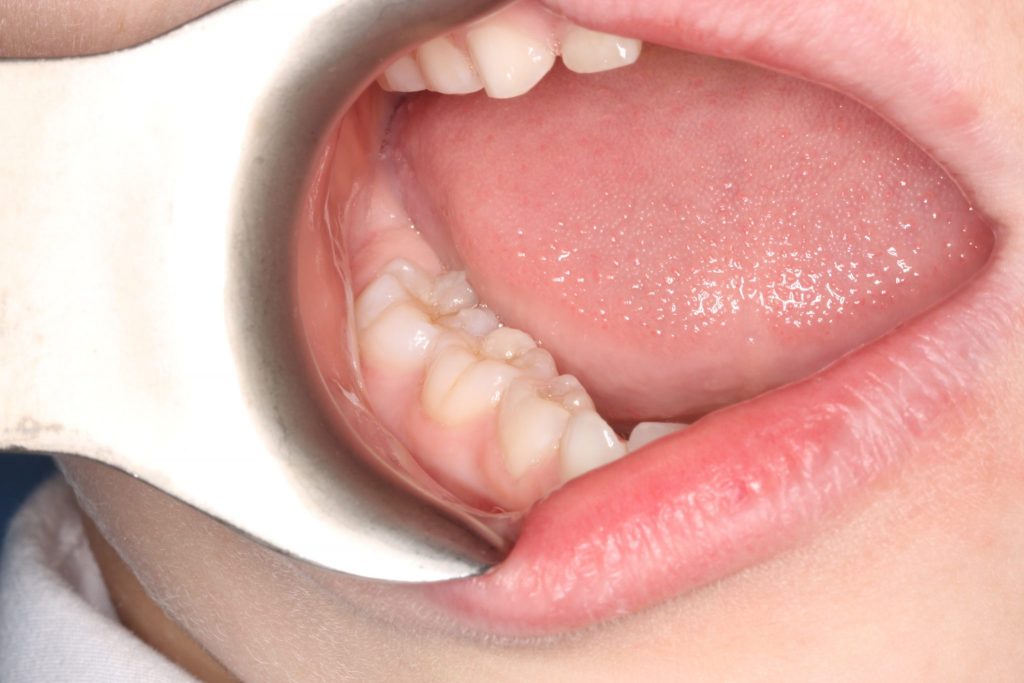
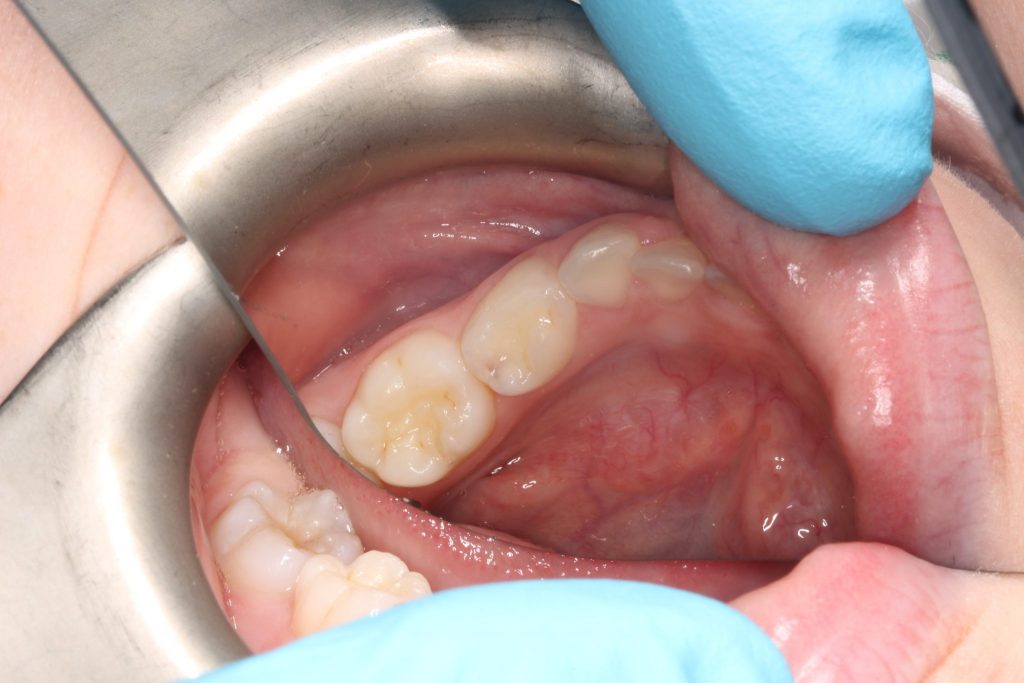
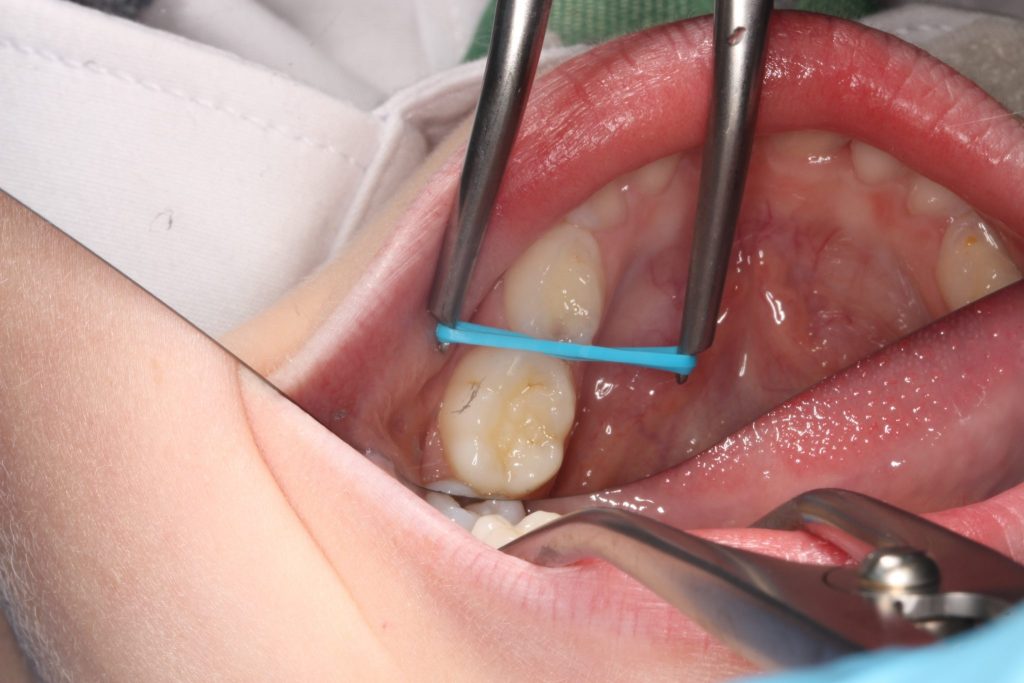
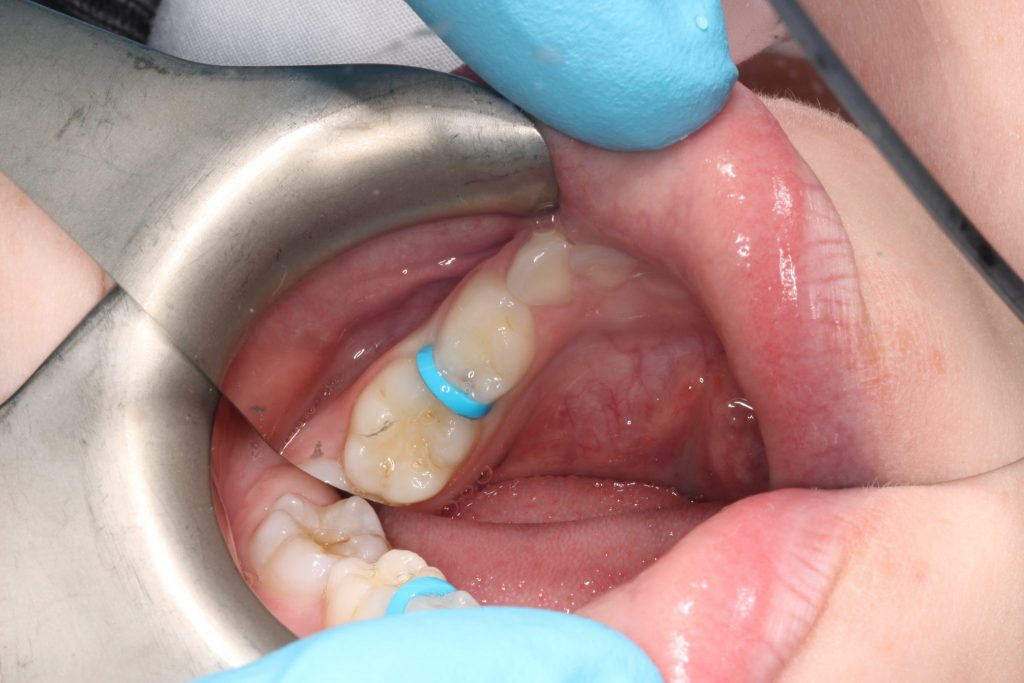
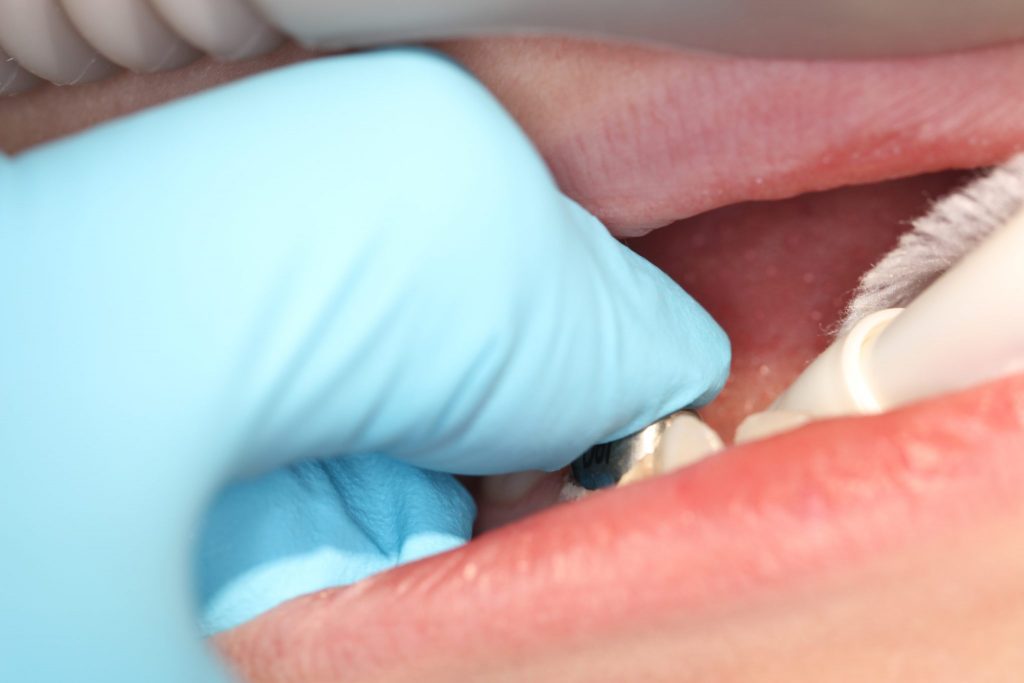
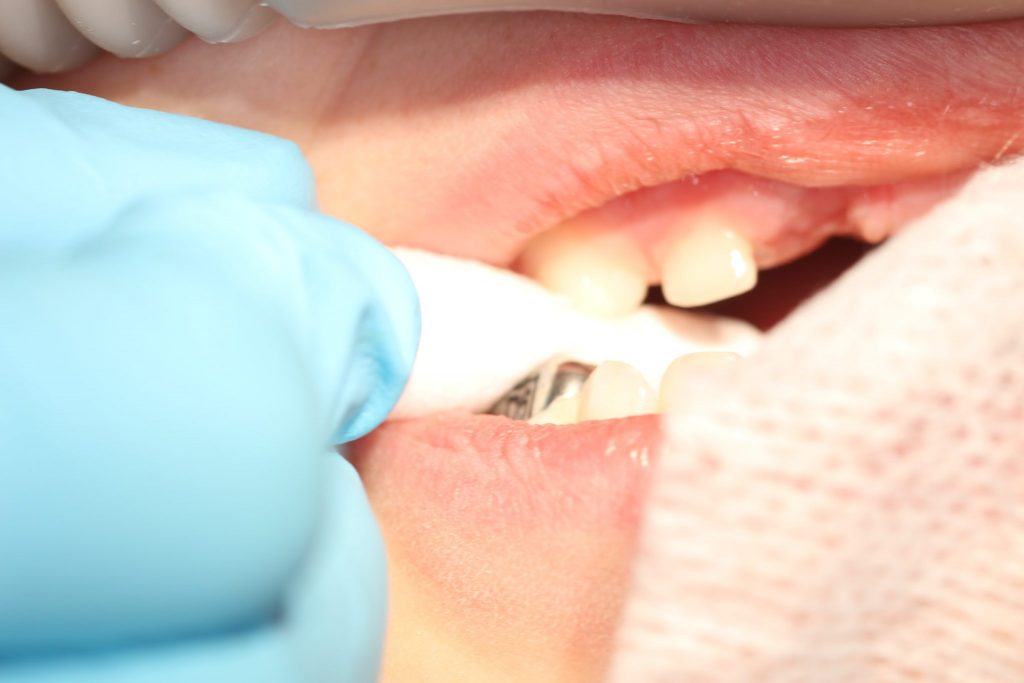
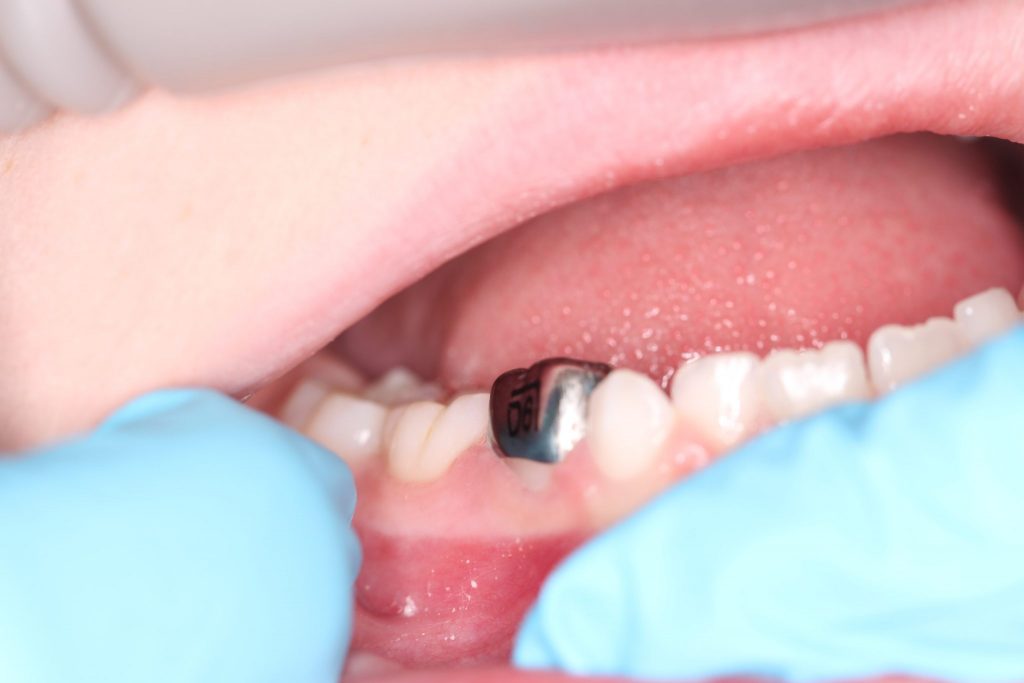
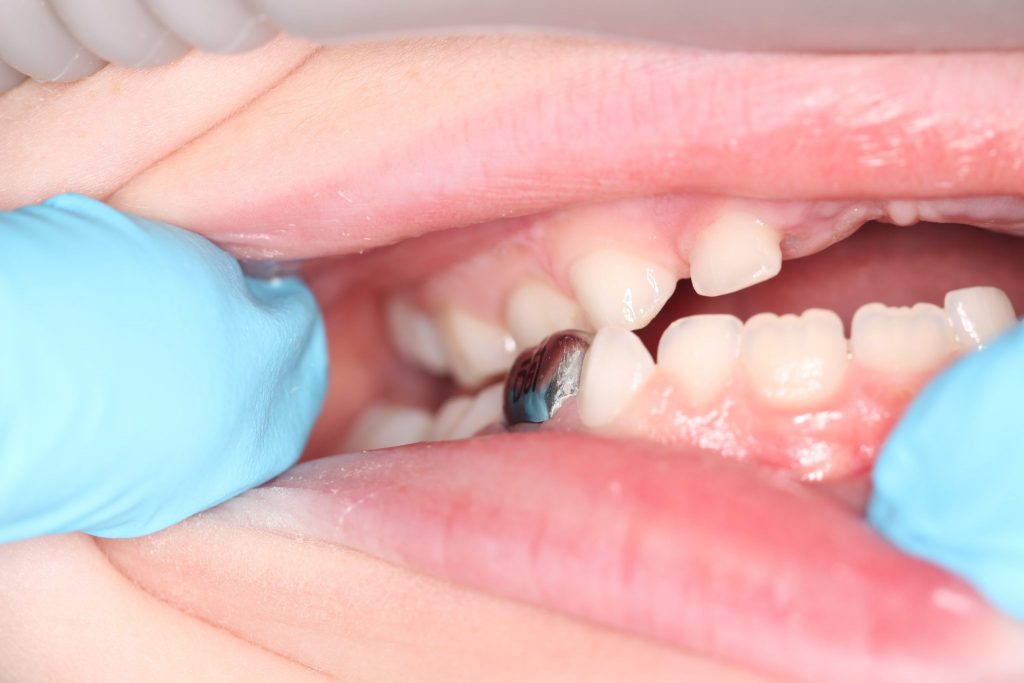
Following cementation, it is important to deliver post-operative instructions to the child and parent which will include:
- Soft diet for the day
- Analgesia for up to a week after placement
- Reassurance that the blanching will dissipate within a day and the occlusion will stabilise over the following weeks
Conclusion
Use of the Hall Technique in the management of caries in primary molars is a simple and child friendly technique that general dental practitioners should be offering for their patients. Case selection is important, but where appropriately used, Hall crowns have been shown to be more effective than conventional methods. Although the true Hall technique involves no tooth preparation, a modified technique could be considered – for example, breaking through a contact point to create space if separators are not available or have fallen out, or removing a buccal bulbosity to allow seating of the crown.
Stainless Steel Primary Molar Crowns from 3M Oral care are designed to duplicate the anatomy of primary molars and are pre-crimped so often need no or little adaptation to be fitted, particularly when using them in Hall Technique. All the current research behind this technique has been conducted using this 3M product and it has a proven track record. The crowns themselves come in several sizes to cater for the anatomy of your paediatric patients, making them an excellent choice.
Learning this method and implementing it is actually much less technical than many of the treatments we provide every day; what is more challenging for many is managing the patient. Treating children doesn’t always come naturally to many of us, but after practice you will learn what works for you and after a while, fitting these ‘twinkly teeth’ will be second nature!
Author Bios
Natalie is a Specialty Registrar in Special Care Dentistry based in London and Surrey. She is a dental blogger, with her blog ‘A Tooth Germ’ reaching almost half a million views and an NHS Clinical Entrepreneur.
Daniel is a Community Dental Officer working in Surrey, a Clinical Tutor at King’s College London and Locum Staff Grade Oral Surgeon based at the Homerton Hospital.
No Comments
No comments yet.
Sorry, the comment form is closed at this time.



